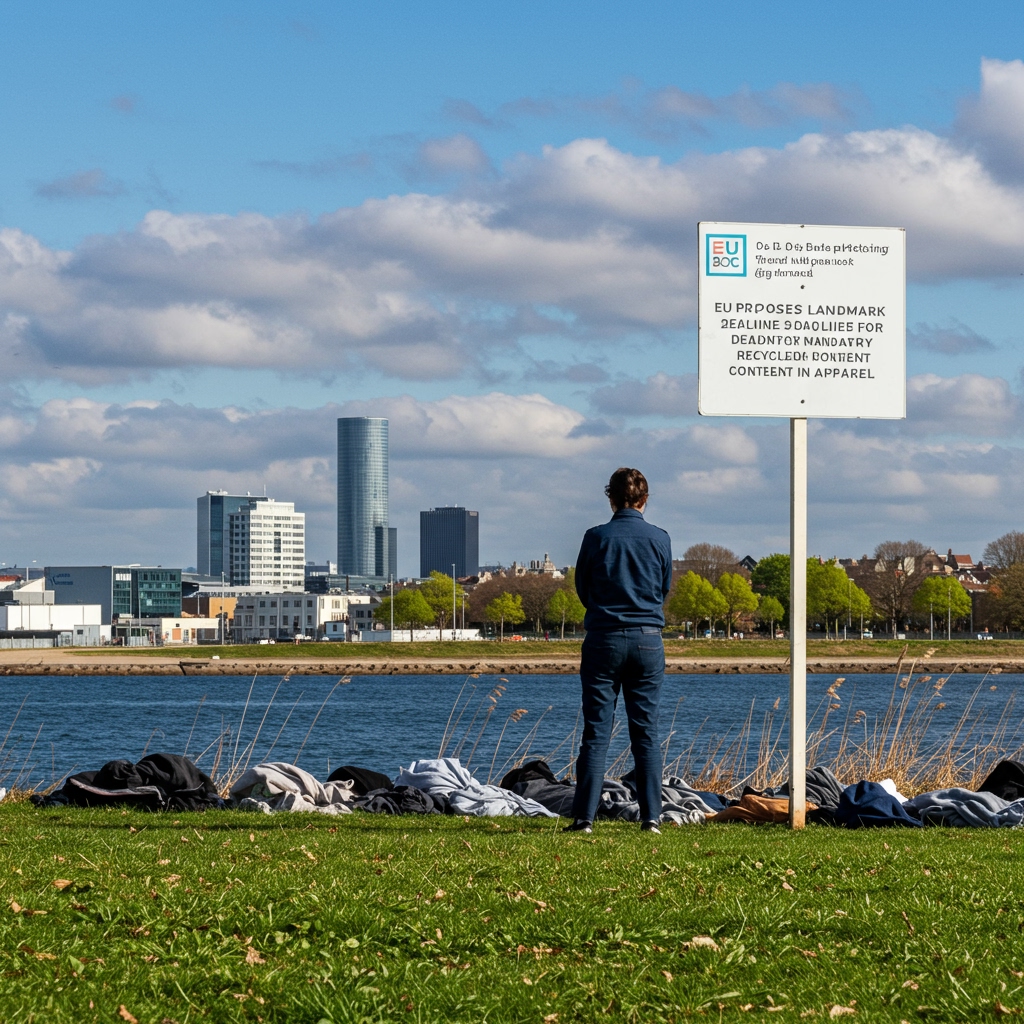EU Unveils Ambitious Plan for Circular Textiles
The European Commission today marked a significant step in its commitment to sustainable fashion, releasing a draft regulation that proposes mandatory minimum recycled fiber content requirements for textile products sold within the European Union. This legislative initiative is a cornerstone of the EU’s ambitious Green Deal agenda, specifically targeting the environmental footprint of the textile sector, one of the most resource-intensive industries.
Under the provisions of the proposed rules, textile products, with a particular focus on apparel containing polyester or cotton blends, would be required to incorporate a minimum threshold of recycled fibers. The draft stipulates that by 2030, such products must contain at least 20% recycled fibers. The regulation also signals the potential for these minimum percentages to be progressively increased in subsequent years, reflecting technological advancements and the scaling up of recycling capacities across the bloc.
Driving the Green Transition in Fashion
The proposal underscores the EU’s broader strategic objective to transition towards a circular economy, where products and materials are kept in use for as long as possible, minimizing waste and the reliance on virgin resources. The textile industry is a prime target for such measures, given the massive volumes of clothing and textiles consumed and discarded annually, contributing significantly to landfill waste and greenhouse gas emissions.
The Commission’s move is designed to accelerate the development and adoption of innovative recycling technologies and infrastructure. By creating a mandatory demand for recycled fibers, the regulation aims to provide a clear market signal, encouraging investment in collection, sorting, and processing facilities capable of handling diverse textile waste streams, including post-consumer textiles which currently pose significant logistical and technological challenges for high-quality recycling.
The focus on polyester and cotton blends is particularly relevant, as these represent the most common fiber types used in apparel globally. Establishing a mandatory minimum for these materials is expected to have a widespread impact across the supply chain, from fiber producers and textile manufacturers to brands and retailers selling into the EU market.
Industry Reacts: Acknowledging Goals, Raising Concerns
The announcement of the draft regulation has prompted reactions from industry stakeholders. EURATEX, the European Apparel and Textile Confederation, issued a statement acknowledging the environmental goals that the proposed legislation seeks to address. The organization expressed support for the overarching objective of fostering a more sustainable and circular textile industry within Europe.
However, EURATEX also highlighted significant concerns regarding the practical implementation and potential consequences of the mandatory requirements. A primary concern articulated by the confederation relates to the current lack of adequate recycling infrastructure across member states. The organization pointed out that the existing capacity for collecting, sorting, and processing textile waste into high-quality recycled fibers is insufficient to meet the proposed mandatory targets, especially for diverse material blends and post-consumer waste.
Furthermore, EURATEX raised alarms about the potential financial burden that these new requirements could place on businesses, particularly small and medium-sized enterprises (SMEs) that constitute a significant portion of the European textile and fashion sector. Implementing changes to sourcing, production processes, and supply chains to comply with the recycled content mandates may require substantial investment in technology, training, and new partnerships, which could be challenging for smaller companies with limited resources.
The confederation suggested that while the goals are laudable, the proposed timeline and mandatory nature of the targets require careful consideration of the industry’s current capabilities and the need for supportive measures, such as funding for infrastructure development and incentives for technological innovation, to ensure a smooth and equitable transition.
Next Steps and Implementation Challenges
The draft regulation will now undergo scrutiny and potential amendments through the EU’s co-decision process involving the European Parliament and the Council of the European Union. This process allows for input from member states, industry representatives, environmental groups, and other stakeholders, shaping the final text of the legislation.
Successful implementation will hinge on several factors, including the rapid development of effective and scalable textile recycling technologies, particularly for complex fiber blends. Investment in automated sorting systems capable of identifying different fiber types at speed is crucial. Furthermore, establishing efficient collection systems for used textiles and ensuring a steady, high-quality supply of feedstock for recyclers are critical logistical challenges that need to be overcome.
The regulation, if adopted in its current form or with modifications, will fundamentally alter how textile products are designed, manufactured, and sourced for the European market. It represents a clear signal that the EU is determined to move beyond voluntary initiatives and drive systemic change through legally binding requirements.
While the 2030 deadline presents a significant challenge for the industry, it also offers a clear target that can stimulate innovation and investment in the circular economy. The dialogue between policymakers and industry, as initiated by reactions like that of EURATEX, will be essential in navigating the complexities and ensuring that the transition to a more sustainable textile sector is both ambitious and achievable.





